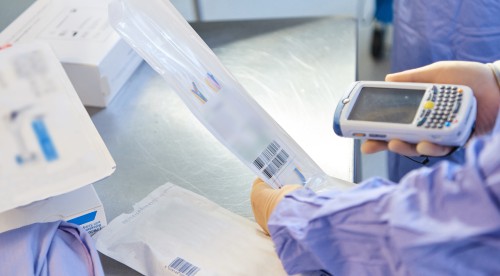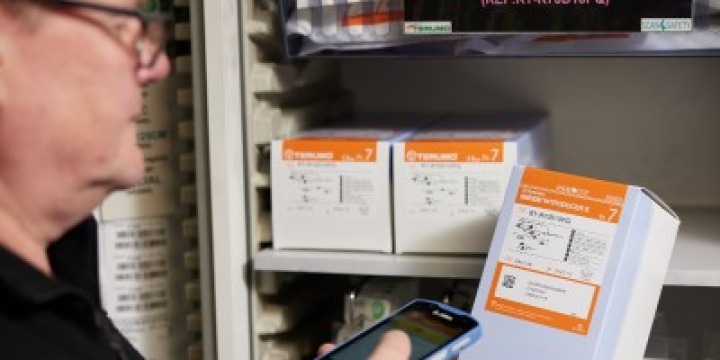Accurate identification of products and medical devices helps to improve patient safety.
Packaging for products and devices include a GS1 barcode. This is encoded with key product information such as the batch/lot number, serial number, and date of manufacture or expiry, along with the unique identifier - the GS1 Global Trade Item Number.
When scanned at the point of care or use, this information is captured in near real time, where it can then be logged into the desired system or record. This could be an inventory management system to help manage stock levels, product expiry, and recall alerts; or captured in the electronic patient record (EPR) to trace products to the patient.

Product catalogues
The Department of Health and Social Care, together with the Medicines and Healthcare products Regulatory Agency, are working on developing a single national Product Information Management (PIM) system.
The intention of the PIM is create a centralised repository of product data so hospitals have access to accurate and consistent product information.
Inventory management
Using GTINs in inventory management systems (IMS) helps to improve stock management while also supporting traceability and patient safety at the point of care or use.

- When a product or medical device is ordered, the GTIN is captured to ensure the right product is ordered and prevent errors.
- Once delivered, the GS1 barcode is scanned upon receipt and the GTIN recorded in the IMS. This provides clear stock levels to keep track of product availability.
- Each time an item is needed and removed from inventory, the GS1 barcode is scanned which automatically updates stock levels in the IMS by matching the GTIN.
Unique device identification (UDI)
Unique identification is particularly important for medical device traceability and patient safety. Many medical devices now use GS1 GTINs as the primary unique device identifier (UDI).
In a survey conducted with Portsmouth Hospitals University NHS Trust and GS1 Healthcare, we tested more than 2400 medical devices to gauge adoption.
More than 95% of the 2433 medical devices assessed use a GS1 GTIN for UDI.
More suppliers using GS1 GTINs as the primary unique device identifier than in 2018.
Use of the GS1 2D DataMatrix on product packaging has nearly doubled since 2018.
Barcode scanning mandate and the MDOR
To support medical device traceability, the government have mandated NHS England to drive the adoption of barcode scanning for high-risk medical devices.
By March 2024, NHS trusts in England will be required to implement scanning to capture accurate device information in support of the Medical Device Outcomes Registry (MDOR).
Efficient product recalls
By scanning the product or medical device to the patient it is then easier to identify any faulty products and any patients that might be affected.
For Leeds Teaching Hospitals NHS Trust, implementing Scan4Safety has reduced product recall times from eight days to just 35 minutes.

The ability to rapidly perform product recalls and safety alerts including implants improves patient safety."
David Berridge
Deputy chief medical officer, medical director – operations (at the time of the Scan4Safety report)

Barcode verification
When a barcode does not scan, it is usually because the wrong barcode type is used or the data is not structured correctly. This makes it difficult for hospitals that rely on barcode scanning for inventory management, Scan4Safety implementation and point-of-care scanning.
If you find any product barcodes that do not scan, you can send us a picture of the image label. We can then verify this and follow up with you and the manufacturer accordingly.



